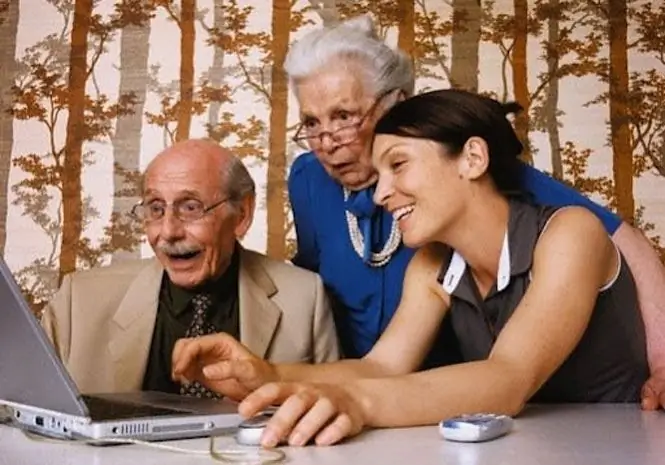- Author Evan Saunder [email protected].
- Public 2023-12-17 04:58.
- Last modified 2025-01-24 13:57.
The computer has become a necessary part of an adult's life. Older people have a prejudice that the computer is too tough for them. Referring to memory problems, they bypass the computer. But in vain. The memory of older people does not deteriorate so much, and it is quite possible to learn how to use a computer. The thing is that we often forget how much work children have to put in to learn how to do something. And when adults do not succeed the first time, they begin to blame it on old age, memory, etc. It's not about age, but about the learning process.

Instructions
Step 1
First, determine why you need a computer. What are you going to do with it? Write letters to friends, communicate on social networks, find out the news, get access to the information you need, pay utility bills and order purchases, etc. Understand what is needed most. For example, chat with friends on social networks.
Step 2
Break the tutorial down into small, simple pieces. Understand that a computer is a complex mechanism and you need to act step by step. Today I turn my computer on and off. Tomorrow I open and close the photo file and learn to use the mouse.
Step 3
Start a notebook and write everything down: how to turn on the computer, which button and how many times to press, how to get to sites, passwords, logins. Over time, this cheat sheet will lose its relevance, but now it is necessary. Remember, you did the same at school. If necessary, you can not only write in the book, but also draw the necessary buttons and other things.
Step 4
Repetition - Any new information requires constant training. Allocate at least 15-20 minutes a day to your computer. And exercise regularly. It will be difficult in the beginning, but over time you will get used to it and it will be interesting and pleasant that you have new opportunities.
Step 5
Celebrate achievements. Every time you turn off your computer, praise yourself for any achievement. And at least for the fact that you turned on the computer yourself. It will be even better if you tell your relatives and friends about your achievements.
Step 6
Develop further. For example, after learning how to communicate on social networks, do not stop there. Make a photo collage, learn to write in a word processor, make spreadsheets in Excel and do home bookkeeping (if interested), use videos, order food, pay bills, order theater tickets, or book hotels.
Look for a variety of uses for your skill and develop it further.






